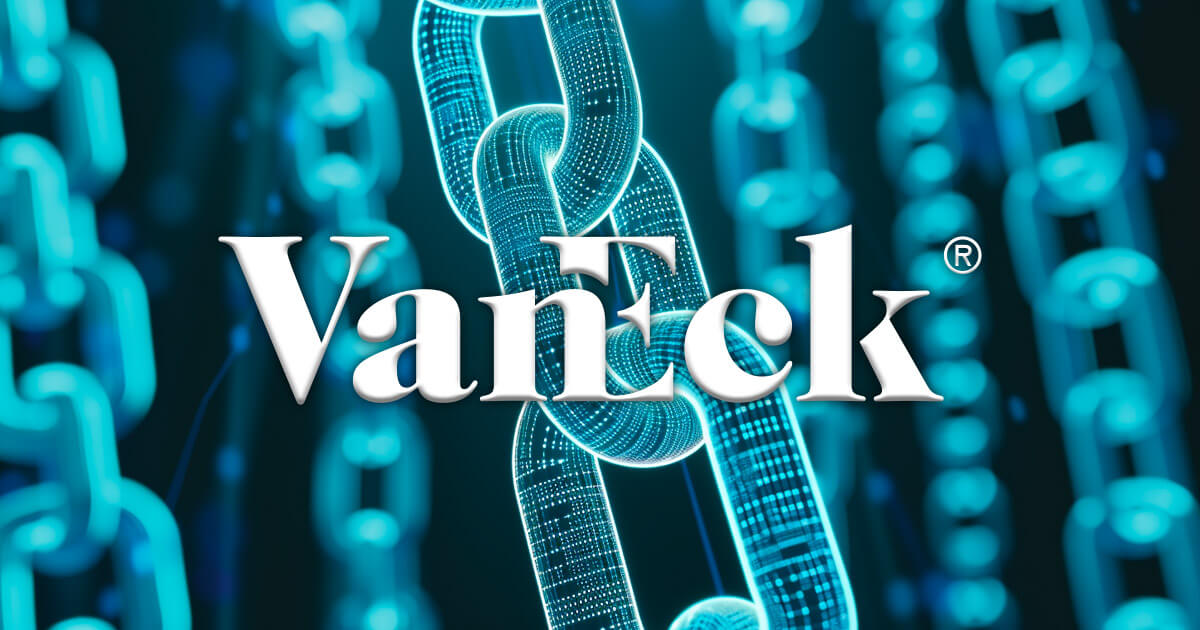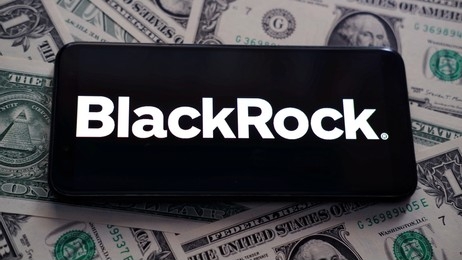Latest News
Exploring the Potential Impact of Authoritarian Efficiency | MATIC News

The most recent episode of the Bankless podcast discussed the potential advantages of authoritarian regimes in the 21st century. The argument stems from the idea that the Chinese and Russian governments allocate significant resources to promote their narratives while the US government takes a more hands-off approach.
In the episode, hosts Ryan Sean Adams and David Hoffman delve into whether authoritarianism could outcompete liberal democracies, featuring insights from economist Noah Smith and Ethereum co-founder Vitalik Buterin.
Efficiency of Authoritarian regimes as a threat to liberalism
Smith argues that liberal democracy was hailed as the optimal societal model at the end of the 20th century, epitomized by Francis Fukuyama’s “The End of History” thesis. However, recent developments have cast doubt on this triumphalism. The rise of China, perceived weaknesses in the US, and the transformative impact of the internet are central to this reassessment.
The internet’s role is pivotal. Smith posits that liberal democracies historically excel at aggregating information through markets, elections, and public discourse. However, the internet’s ability to centralize vast amounts of data potentially reduces this advantage. Authoritarian states can now harness this data to gauge public sentiment, allocate resources more efficiently, and respond swiftly to unrest, as evidenced by China’s rapid policy shifts following the 2022 “white paper protests.”
Moreover, the internet fosters information anarchy, making it easier for disinformation to proliferate. This scenario complicates governance in liberal democracies, where politicians spend substantial time countering false narratives and fundraising, detracting from effective governance.
Buterin expands on this, likening the information landscape to Thomas Hobbes’ concept of a “war of all against all,” where monopolistic control over narratives might emerge as the only stable equilibrium. This metaphor highlights the potential for authoritarian regimes to exploit the internet’s capacity for data aggregation, turning a tool designed for liberal empowerment into one that strengthens centralized control.
Counterarguments to the efficiency of Authoritarian regimes
Smith and Buterin then explore counterarguments. Smith draws a parallel to the printing press, which lowered information costs and led to increased liberalism and societal fragmentation rather than authoritarian dominance. He questions why the internet wouldn’t follow a similar trajectory.
However, Smith explains that the situation today involves nonlinearities. Initially, reducing information costs via technologies like the printing press and telegraph bolstered liberal democracies by improving information aggregation. As these costs approached zero, benefits plateaued while the costs of disinformation and information warfare rose exponentially.
Buterin adds that centralized systems often excel in extraction rather than production, potentially outcompeting more liberal systems in zero-sum conflicts. He emphasizes that defining success solely by economic output might overlook broader impacts on human flourishing.
Buterin then considers the digital world’s fundamental differences from the physical one, particularly in terms of defense mechanisms. Digital defenses, such as encryption and decentralized platforms, offer robust protections without physical analogs, suggesting an inherent resistance to totalizing control in the digital sphere.
Moreover, Buterin notes that the fragmentation of the internet into smaller, more specialized communities could mitigate the negative impacts of information warfare. These fragmented spaces often maintain higher discourse quality compared to large, chaotic platforms like Twitter.
Buterin stated,
“Twitter is the worst of it that you see, and it’s the worst of it precisely because you can see it right if you think about private group chats, for example.
Private group chats consistently maintain higher levels of quality and high levels of productive discourse on smaller social media platforms, whether it’s Farcaster or whatever else they maintain higher levels of discourse.”
He then pointed to an article in 2022 by Smith discussing how the internet wants to be fragmented.
Smith acknowledges this point, agreeing that reducing reliance on broad, contentious platforms could lessen the social costs associated with information tournaments, allowing for more constructive and focused discussions within smaller, more coherent groups.
Despite these reassurances, Smith raises concerns about the global reach of authoritarian influence, particularly through sharp power tactics. He highlights how China uses economic leverage to influence foreign companies and governments, blurring national borders in the digital space. This ongoing cross-border information warfare presents a unique challenge distinct from traditional physical conflicts.
How blockchain could save democracy
During the discussion, Noah Smith raised the question of whether blockchain technology could enable secure communication among citizens in authoritarian states like China and Russia. He wonders if there are ways for people to talk freely and anonymously about political issues, bypassing government surveillance and censorship.
Vitalik Buterin responds by highlighting the work of a company called Rarimo, based in Kyiv. It developed a tool called “Freedom Tool,” which uses zero-knowledge proof technology to allow Russian citizens to prove their citizenship and participate in online voting without revealing their identities.
This system ensures that the results are tamper-proof and visible, creating a form of anonymous, censorship-resistant voting. Buterin sees this as an example of how blockchain and zero-knowledge proofs can provide both privacy and trustworthiness, potentially creating a more secure and resilient infosphere against both centralized and decentralized cyber attacks.
Buterin acknowledges that while blockchain technology might not be necessary for Americans to communicate, it could be crucial for people in authoritarian states to have secure and private conversations about their political situations. This technological capability could help foster internal dissent and democratization efforts within these regimes by providing a safe space for dialogue and organization.
Smith appreciates this perspective and sees potential in developing tools that make the internet landscape more conducive to pluralism, where multiple groups can interact in productive ways. The idea is not to play cat-and-mouse games with oppressive regimes but to create robust systems that support healthy information ecosystems, allowing diverse voices to be heard without fear of retribution.
In conclusion, blockchain technology, with its ability to provide secure, anonymous communication and verifiable voting mechanisms, offers promising avenues for supporting democratic movements and safeguarding freedoms in authoritarian contexts.
By leveraging these technologies, it may be possible to counteract some of the disadvantages liberal democracies face in the digital age, ensuring democracy can continue to thrive even in challenging environments.
Ultimately, the discussion emphasizes the complexity of predicting long-term outcomes in the face of rapid technological advancements. While the potential for authoritarian regimes to exploit these technologies is significant, the inherent adaptability and resilience of liberal democracies should not be underestimated. The future remains uncertain, shaped by the interplay between technological capabilities, political structures, and societal values.
Mentioned in this article
Latest News
VanEck’s Matthew Sigel confirms Solana ETF is a bet on Trump victory | MATIC News

VanEck Head of Digital Assets Research Matthew Sigel confirmed speculation that the company’s Solana spot ETF proposal bets on Donald Trump winning the US presidency.
The deadline for VanEck’s application is set for March 2025, which would put it well beyond the aftermath of the US Presidential elections in November.
Sigel simply responded with a simple:
“Can confirm.”
The analysts said approval odds for each ETF are “near zero” if a Democrat victory leaves Joe Biden in office and “better … but not guaranteed” if Trump wins the election. Trump would likely appoint a new SEC chair to replace the agency’s current chair, Gary Gensler.
Surveillance sharing
Another issue seen as a hurdle to potential Solana ETF is the lack of a futures market on CME, which experts believe was a key factor in spot Bitcoin and Ethereum ETFs gaining the regulatory green light.
Grayscale notably argued in its case against the SEC that the surveillance sharing agreements in place for the CME Bitcoin futures were replicable for its proposed spot ETF and sufficient to detect and prevent fraudulent activities.
The firm claimed that the SEC failed to provide a reasonable explanation for treating spot Bitcoin ETFs differently from futures ETFs in terms of surveillance-sharing agreements.
The case essentially revolved around whether the SEC’s demand for a surveillance sharing agreement specifically for a spot Bitcoin ETF was justified and whether the SEC applied its standards consistently across different types of Bitcoin-related ETFs.
Since the SEC has now approved spot ETFs for Bitcoin and Ethereum, Sigel believes VanEck will not need to demonstrate a CME futures market around Solana to obtain its ETF. He previously stated:
“Surveillance sharing agreements with spot crypto exchanges can obviate need for CME futures.”
Bloomberg agrees SSA is enough
Bloomberg analysts agreed that an SSA “should be enough” but concluded VanEck’s approach will “only work if there’s new leadership at the SEC and/or a literal act of Congress.”
They noted that past ETF filings, particularly BlackRock’s June 2023 spot Bitcoin ETF application, included surveillance-sharing agreements (SSAs) with Coinbase, leading other firms to introduce similar clauses. However, the analysts added that the agreements ultimately proved unnecessary.
The analysts also said that the SEC’s ongoing securities lawsuits against multiple exchanges, including Coinbase and Kraken, also complicate SSAs between exchanges and ETF issuers.
Mentioned in this article
Latest News
Bahamas to provide CBDC access via commercial banks | MATIC News

The Bahamas will provide access to its central bank digital currency (CDBC) the “Sand Dollar” through commercial banks to increase adoption, Reuters reported on July 1, citing the country’s central bank governor.
Governor of the Central Bank of The Bahamas John Rolle said the country intends to establish the regulations within two years and has started signaling its intent to banks.
Rolle said:
“We foresee a process where all of the commercial banks will eventually be in that space and they will be required to provide their clients with access to the [CBDC].”
The Central Bank of the Bahamas reportedly sees the change as critical to raising CBDC and mobile payment adoption rates, even though banks will need to significantly modify their existing IT systems to comply with the upcoming obligations.
Rolle said uptake of the Sand Dollar is still limited years after its launch in 2020, requiring a shift from incentives to enforcement.
Adoption in question
Reuters described low adoption statistics amid the news. It reported that the CBDC accounts for under 1% of the country’s currency in circulation.
Reuters said wallet top-ups fell to $12 million in the eight months before August 2023 from $49.8 million in the same period in 2022, based on central bank data.
Rolle previously described “wide use, but very low average transaction value” in an interview with The New Times on June 19. He said 120,000 mobile wallets exist, equal to 20% of retail bank accounts, but mobile wallets make up less than 1% of retail payments.
Strong short-term data
A central bank press release from February described stronger short-term data. It recognized “modest seasonal growth in digital payments activities,” including the Sand Dollar, even though lower government transfer payments impacted overall year-to-date trends.
The bank said that the person-to-business (P2B) and business-to-business (B2B) transactions reached a combined $4.5 million, mainly involving the Sand Dollars, doubling from November 2022. It said personal wallet counts rose 20% year-to-date in December 2023. Sand Dollars in circulation rose 60.8% to $1.7 million.
Bahamas’ mandatory adoption policies could precede other strategies elsewhere. Reuters noted that the European Central Bank similarly intends to require retail and banks to accept and offer any future digital euro if it proceeds with one.
Latest News
Polkadot treasury holds $245M but faces revenue decline and two-year runway | MATIC News

The Polkadot Treasury holds assets equivalent to 38 million DOT, worth approximately $245 million. Head Ambassador Tommi Enenkel, popularly known as Alice and Bob, shared a new report providing the latest update on the network’s treasury.
This balance equates to about two years of the runway at its current spending rate. The report stated:
“At the current rate of spending, the Treasury has about two years of runway left, although the volatile nature of crypto-denominated treasuries makes it hard to predict with confidence.”
Polkadot’s first six months of spending
During the first six months of this year, Polkadot invested heavily in its ecosystem, spending 11 million DOT, valued at around $87 million, across various projects.
According to the report, the network invested about $37 million in Outreach activities such as advertisements, sponsorships, and events. The network signed sponsorship deals with race car driver Conor Daly and also pushed several marketing activities designed to bolster the network’s adoption by the broader global community.
Polkadot also spent $23 million developing its network features and upgrades, including SDK, Data Services and Indexing, Governance, and Subwallets.
Moreover, the network invested $15 million in liquidity incentives and $5.5 million in Talent and Education. Additionally, it spent $3.8 million to maintain the network and core ecosystem components, and another $2.1 million went towards Research.
Revenue decline
The report highlighted a decline in Polkadot’s revenue. During the first six months of the year, the network’s total earnings dropped to 171,696 DOT from 414,291 DOT, recorded in the second half of 2023.
Enenkel attributed this decline to the significant drop in network fees, which fell from 313,443 DOT last year to 39,444 DOT in the 2024 first half:
“We see that direct revenue from fees is still marginal. Polkadot made 300k DOT from fees in 2023-H2 from a short-lived inscriptions campaign. Fees under regular conditions are pretty stable with about 20k DOT per quarter. Other sources of revenue are typically transfers from accounts that return funds that they received and pay them back for various reasons.”
Disclaimer: CryptoSlate has received a grant from the Polkadot Foundation to produce content about the Polkadot ecosystem. While the Foundation supports our coverage, we maintain full editorial independence and control over the content we publish.
-

 Hot Projects4 months ago
Hot Projects4 months agoBitcoin Blasts Past $70,000 to Register New All-Time High | MATIC News
-

 Latest News4 months ago
Latest News4 months agoCourt upholds SEC’s unregistered securities claims against Gemini, Genesis’ Earn program | MATIC News
-

 Latest News2 months ago
Latest News2 months agoSix Coinbase customers claim the exchange is violating securities laws in new lawsuit | MATIC News
-
Hot Projects2 months ago
Bitcoin Will Be Set For New ATHs If It Breaks This Resistance: Analyst | MATIC News
-

 Hot Projects3 months ago
Hot Projects3 months agoBitcoin ETF Inflows Could Eclipse $1 Trillion, Predicts Bitwise CIO | MATIC News
-

 Hot Projects3 months ago
Hot Projects3 months agoOndo Finance Joins BlackRock Tokenized Fund As Inflows Surpass $160M | MATIC News
-

 Latest News4 months ago
Latest News4 months agoOver $1 billion wiped off HEX’s valuation following Richard Heart’s disparaging remarks | MATIC News
-

 Hot Projects2 months ago
Hot Projects2 months agoPEPE Whales Go On Massive 720B Shopping Spree Amid Campaign For New ATHs, Is It Time To Get In? | MATIC News



